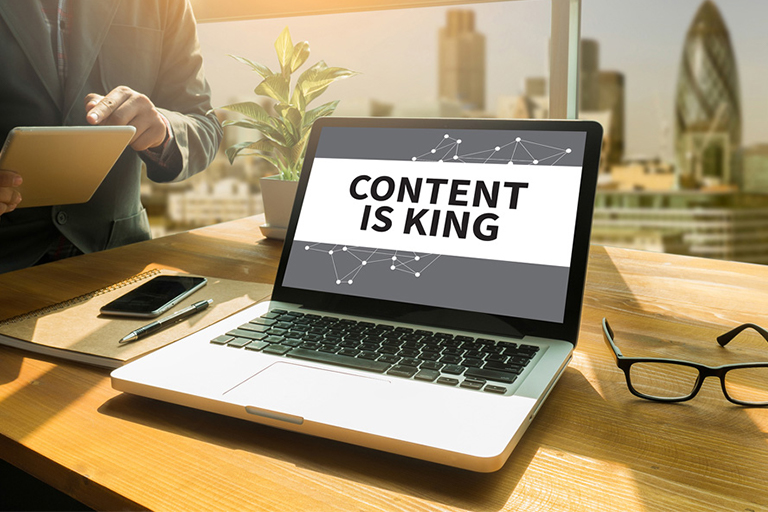
In the current digital era, your website frequently serves as the initial interaction between your business and prospective customers. The content on your website plays a crucial role in attracting, engaging, and converting visitors. However, what is website content? What strategies do you follow so that your audience would find the content truly engaging?
Let’s dive in and explore this topic in depth.
What is Website Content?

Web Content vs. Web Copy: What's the Difference?
Web Content: This is a broader term that encompasses all types of information on a website, including articles, blog posts, videos, images, and more. It’s designed to inform, educate, or entertain visitors.
Web Copy: This refers specifically to the persuasive text on a website, such as headlines, product descriptions, and call-to-action buttons. Its primary purpose is to convince visitors to take a specific action.
Types of Webpage Content
- Text: Articles, blog posts, product descriptions, about pages
- Images: Photos, infographics, illustrations
- Videos: Product demos, tutorials, vlogs
- Audio: Podcasts, background music
- Interactive Elements: Quizzes, calculators, forms
What is Good Website Content?
Good website content is:
- Relevant: It considers the requirements and interests of your intended audience.
- Valuable: It provides useful information or solutions for any issues.
- Engaging: It draws in and holds the reader’s curiosity.
- Well-organized: It’s structured in a logical, easy-to-follow manner.
- Optimized for SEO: It includes relevant keywords and follows SEO best practices.
- Accessible: It’s easy for all users, including those with disabilities, to read and understand.
14 Tips to Write Awesome Website Content

- Know Your Audience: Understand who you’re writing for and what they’re looking for.
- Establish Your Objectives: Decide what you hope to accomplish with the content you create.
- Create a Content Strategy: Plan your content topics, formats, and publishing schedule.
- Use Simple, Clear Language: Steer clear of jargon and make sure your words are terse and direct.
- Structure Your Content: Use headings, subheadings, and bullet points for easy scanning.
- Incorporate Keywords: Include keywords that read naturally with the content flow. Avoid keyword stuffing.
- Use Visuals: Break up text with images, videos, or infographics to enhance engagement.
- Write Compelling Headlines: Craft attention-grabbing titles that accurately reflect your content.
- Optimize for SEO: Use meta descriptions, alt tags, and internal linking.
- Include Calls-to-Action (CTAs): Guide visitors on what to do next after consuming your content.
- Make it Mobile-Friendly: Make sure that all devices can read your writing with ease.
- Keep it Updated: Regularly review and update your content to ensure it remains relevant.
- Use Social Proof: Incorporate testimonials, reviews, or case studies to build trust.
- Proofread and Edit: Always review your content for errors before publishing.
Website Content Management Systems:
- WordPress: Versatile and user-friendly, great for blogs and small to medium-sized websites.
- Drupal: An effective and adaptable platform that works well for intricate, expansive websites.
- Joomla: An excellent balance between Drupal and WordPress.
- Shopify: Excellent for e-commerce websites.
- Wix: User-friendly website builder with drag-and-drop functionality.
Website Content Examples
- Blog Posts: Comprehensive articles on industry-related subjects.
- Product Pages: Detailed descriptions and images of products or services.
- About Us Page: Mission, Vision, Company’s journey, and team details.
- FAQ Section: Answers to common customer questions.
- Case Studies: Real-world examples of your products or services in action.
- Creative Commons: For images and videos.
- Pexels and Unsplash: For excellent, cost-free stock images.
- Canva: For creating graphics and infographics.
- YouTube: For embedding relevant videos (with proper attribution).
- Guest Posts: To invite industry experts to contribute content.
- Increased Visibility: Good content improves your search engine rankings.
- Brand Authority: Quality content establishes you as an industry expert.
- Customer Engagement: Valuable content keeps visitors on your site longer.
- Lead Generation: Content can attract and convert visitors into potential customers.
- Customer Education: Content can improve clients’ awareness of the products or services you provide.
- A Homepage with a clear value proposition
- An About Us page
- Products or Services pages
- Blog or Resources section
- Contact information
- Testimonials or case studies
- FAQ section
The five main content types are:
- Blog posts and articles
- Visual content (images, infographics)
- Video content
- Audio content (podcasts)
- Interactive content (quizzes, polls, calculators)

 India
India USA
USA


